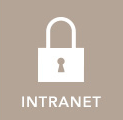New report on the Risk Management Toolkit of the CAP is out!
A new report has just been issued!
This report investigates the drivers of EU regions’ expenditure towards the Risk Management Toolkit of the Common Agricultural Policy (CAP) by applying and comparing four types of regional-level spatial models, namely a spatial error model, a spatial autoregressive model, a spatial lag of X model and a spatial Durbin error model.
The research focuses in particular on Measure 5 on “Restoring agricultural production potential damaged by natural disasters and catastrophic events and introduction of appropriate prevention actions” and Measure 17 on “Risk management” of the CAP’s Rural Development policy.
Results suggest that there is a strong spatial dependence in the level of RMT expenditure. Higher expenditure towards RMT occurs in regions more exposed to environmental risks, with more land in mountainous and disadvantaged areas and with more arable, pasture and forest land. The expenditure on financial contributions for investments to restore agricultural production damaged by natural disasters is lower in agricultural intensive regions but higher in rich regions where pasture land is predominant. The expenditure for supporting insurance premiums and mutual funds is lower
when the incidence of environmental risks increases and when land use is highly diversified but is higher in richer regions. Our results provide relevant insights for policymakers in the process of developing the future risk management tools of the new CAP post-2020.
Click here and have a look at the report!
Authors:
Mauro Vigani, Amr Khafagy, Robert Berry
Corresponding author:
Mauro Vigani: mvigani@glos.ac.uk


